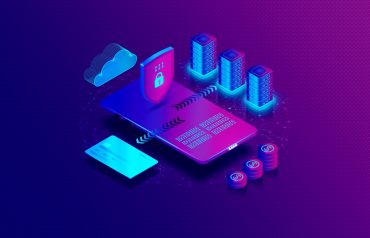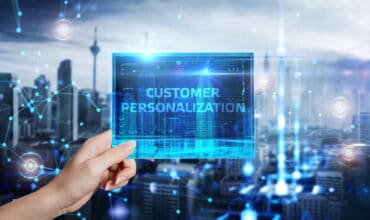
Having a great developer and user experience for APIs and integrations can give businesses an edge on your competition in 2022 and make a world of difference.
Our “6Q4” series features six questions for the leaders, innovators, and operators in the real-time analytics arena who are using innovative technologies to transform the world as we know it.
RTInsights recently asked Suraj Kumar, General Manager, API, Integration, and Microservices at Software AG, what’s in store for integration and APIs in the year to come.
Q1: What are some of the biggest challenges companies face today that can be helped with a modern integration and APIs strategy?

Legacy systems can be a big dependency (and liability) for many organizations looking to achieve a modern integration and API strategy. The industry has seen an increase in the number of companies that are using APIs and API platforms to replace and extend the capabilities of their legacy systems. With the advancement of tools, technology, developer skills, and the availability of low-code/no-code solutions, it’s not as difficult to build an API these days. However, building APIs that are extensible, scalable, use best practices, secure, and properly implement open standards can be a much more difficult feat. Having a modern integration and API strategy set will help alleviate some of the hurdles organizations come up against when building out their systems.
APIs enable businesses to engage with consumers in the digital world and enact how products are going to be viewed, purchased, and consumed in this digital economy, so organizations must adopt an API-first strategy to compete in this competitive market as companies realize their APIs are a necessary solution and not just an add-on to their existing products. The decision to put budget and resources behind their API teams will allow companies to succeed and win in 2022.
Q2: Where are we headed in 2022 with respect to the topic of integration and APIs?
APIs need to be able to integrate with anything, anywhere easily. In 2022, we’ll see the need for seamless API integrations that grow and scale even further with proven integration tools. Because of this increased demand for secure integrations with other APIs and systems, organizations need products that can remove the friction from their integration experience.
APIs drive the digital ecosystem and act as enablers to the digital and physical products that companies have already created or plan on creating. With the huge growth of APIs in the past few years, there has been a corresponding growth in expectations that users and developers have when they go to consume or integrate with an API product. This year, having a great developer and user experience for your APIs and integrations can give you an edge on your competition and make a world of difference as to whether your digital and non-digital products are successful in this competitive market.
We are also seeing an increase for industry vertical-specific ecosystems around APIs and integrations. In the financial industry, for example, changes in standards and government regulations are shaping how financial and banking APIs integrate with one another. The healthcare industry is also seeing similar growth with the development and implementation of Fast Healthcare Interoperability Resources and other healthcare standards. We expect to see a continuation of growth in these existing verticals as well as spikes and new growth in other industries such as government, manufacturing, transportation/logistics, retail, insurance, supply chain, telecom, and some others.
Q3: Where do composable applications come in?
While composable architecture has been around for a while, the term is getting extra attention lately. In 2022, we predict we’ll start to see more enterprises choosing to forego building a net-new API, and instead composing an API from existing interfaces (both internal and external) that will integrate with other APIs to add new features. Composable APIs can potentially allow organizations to reap the benefits from both the flexibility of a custom-built API and the seamlessness of a SaaS API subscription or service. Consumable APIs are also heavily powered by the no-code SaaS and on-premise API integration solutions that exist today.
Q4: We hear a lot about hyper-automation these days. What role does it play with respect to integration and APIs?
When it comes to hyper-automation, the hype is warranted. In 2022, we’ll see an increase in API automation adoption – this goes beyond what we have seen in previous years around automated API integration tests, code unit tests, publishing, and security checks. The real goal of automation is not to replace workers but to allow workers to focus on more important tasks.
For almost all companies, the lack of data integration across business functions is a major obstacle to the successful use of automation technologies. When AI, ML, IoT, and robotic process automation (RPA) are combined, that’s when we get hyper-automation and where companies will sit up and take notice. RPA takes the drudge work away from humans, and now AI, ML, and IoT will smooth the path to automating tasks end-to-end, freeing up and re-focusing human skills. Finally, it’s even possible to automate the development of new products or services.
One caution to consider: Hyper-automation must be done in a standardized way. If RPA is not done with consistent protocols across the business, for instance, there will be significant issues at the point at which different bots need to connect.
Hyper-automation initiatives touch nearly every aspect of businesses, which can make it difficult to ensure consistency among automated tools. The challenge lies in the ongoing management, operation, governance, and risk management of hyper-automated processes and the various integrations associated with them. This forces IT teams to ensure that knowledge gaps are closed across the organization so that new security gaps aren’t created.
Further complicating the equation is the fact that RPA is not a plug-and-play, one-and-done solution. These tools require monitoring and maintenance, and each has its own unique set of needs. To address the proper maintenance of these bots, consider a center of excellence model to create orchestration across RPA tools – by centralizing operations within RPA environments, you cut down on the potential security gaps created between disparate tools and foster greater knowledge sharing across departments.
Q5: How does a strategy based on integration and APIs help with today’s evolving hybrid-work development environment?
In 2022, we’ll see the continued growth of adaptive API management systems which provide a robust and holistic approach to API management – something essential for the evolving hybrid-work environment. Some organizations will need on-premises solutions based on their business, employee count, or virtual work systems. Others will want to use cloud-based SaaS solutions. But a growing number will need a mix of both approaches to successfully integrate APIs into the hybrid-work model. Hyper-automation will play a big role as the more automated systems are in use, the easier it is for organizations to create a better hybrid employee experience.
Q6: How are companies using integration and APIs to meet constantly changing customer needs and improve the customer experience (CX)?
Customer expectations are only going one way – up, up, up. However, businesses are still a step behind. For instance, 76% of customers expect consistent interactions across departments – what we’d call a connected or integrated customer experience – but 54% say it feels like sales, service, and marketing teams don’t share information. Companies are failing at the first hurdle. However, that gap is shrinking, which means there will be a new challenge coming.
There are companies out there that are already combining experiences, but while they’re connected from a sales perspective, they’re not often blended from an experience perspective. APIs are one of the easiest ways companies can target customers during specific moments in their journey to provide a unique and personalized experience. Companies need to be creative about what can offer more value or convenience to their customers. This year, when that thought is extrapolated in a creative way, companies will find themselves establishing ecosystem-like partnerships with other organizations – achieving the blended, excellent CX that customers are demanding.
About Suraj Kumar: With over 15 years of experience in leading enterprise SaaS, cloud, and software product portfolios, Suraj Kumar currently leads global product management, development, architecture, and business development teams at Software AG. In this role, he delivers best-in-class customer solutions for digital transformation and innovation.
![[Download Infographic Now] Vectorization Explainer: A New Form of Parallel Processing](https://no-cache.hubspot.com/cta/default/8019034/e171aa14-f37e-4a3b-a4c7-a0fa7538b5bc.png)



























